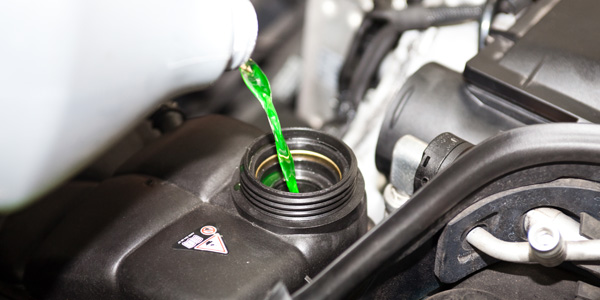
Long-life antifreeze is not forever antifreeze. Most of today’s factory-fill coolants have OAT (Organic Acid Technology) or HOAT (Hybrid Organic Acid Technology) corrosion inhibitors with a service life of five years or 150,000 miles. What’s important to note is that the coolant manufacturers mean whichever comes first, not last! For normal driving of 12,000 to 15,000 miles per year, five years will pass long before the odometer hits 150,000 miles.
So, for most applications, five years is the recommended service interval for changing the coolant. The only exception would be vehicles that rack up more than 150,000 miles in less than five years. This includes vehicles used by Uber and Lyft drivers, long-distance commuters, traveling salespeople, delivery vehicles, etc.
Although the recommended service interval is five years or 150,000 miles for long-life coolants, does that mean the antifreeze is worn out and needs to be changed when the time or mileage limit is reached? It may, depending on the condition of the corrosion inhibitors that are still active in the coolant. Chemical test strips can be used to check the “reserve alkalinity” (a measure of corrosion protection) of the coolant. If the coolant tests good, it still has some time and mileage to go. But if it tests marginal or bad, it needs to be changed regardless of how long or how many miles it has been in service.
Draining the radiator to change the coolant only removes about two-thirds of the total coolant in the system. The other third remains trapped in the engine block, heater core and heater hoses. Minivans and SUVs with rear heater circuits can trap even more residual coolant in their veins.
The best way to change coolant is to have it professionally changed with a coolant exchange machine. The machine taps into the plumbing and extracts the old coolant while replacing it with new. The end result is an almost complete coolant change.
If a vehicle still is under warranty, it should be refilled with the same type of coolant as the original factory fill. It doesn’t have to be the exact same brand, but the coolant must meet the OEM specifications (Dexcool, for example, in the case of GM applications). Intermixing different types of antifreeze may void any remaining warranty coverage on the cooling system components, and may even create some undesirable chemical interactions that reduce the coolant’s ability to inhibit corrosion. Mixing standard “green” formula coolant with a long-life OAT or HOAT coolant may reduce the service life of the mixture to two to three years, or 30,000 to 50,000 miles.
For vehicles that are out of warranty, the best advice is to use the same type of antifreeze as before, or to use a “universal” coolant that is all makes/models-compatible. The actual color of the coolant doesn’t matter as long as the chemistry provides proper protection. The color is only a dye that’s added to the coolant to distinguish one brand of product from another.
For older vehicles with copper/brass radiators (which have not been original equipment for decades), a traditional “green” formula coolant will provide better protection for lead soldered radiator cores and end tanks.
Add-on sales opportunities include cooling system cleaner for vehicles with badly corroded or contaminated cooling systems, and cooling system sealer if needed to prevent and/or stop small coolant leaks. Related components such as belts, hoses and radiator cap also should be inspected and replaced as needed because these parts also don’t last forever.







